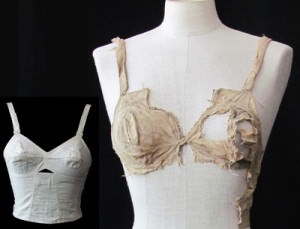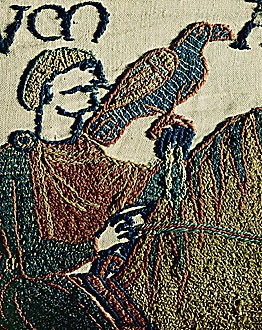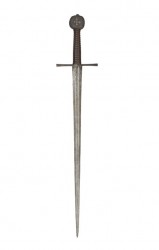Top 10 Medieval News Stories of 2012
The year 2011 was one of fascinating discoveries, some of which made international news. The year ends with something of a cliffhanger, as our #1 story has not yet come to a conclusion. Meanwhile, one of the top stories of 2011 did come to a happy ending with the recovery of a stolen manuscript. One also sees how the research being carried out by medievalists can shed some light on some of the most important issues happening today.
In September, archaeologists made the ‘mind-blowing’ discovery of the skeletal remains of a male body underneath a parking lot in Leicester. They believe that the remains might belong to King Richard III, who ruled England from 1483 to 1485. He was killed at the Battle of Bosworth Field on August 22nd, and he was buried somewhere inside the Greyfriars Church in Leicester. The church itself was demolished in later years, and for centuries it was believed that resting place of Richard III was a mystery. In August of this year the University of Leicester and Leicester City Council announced that they believed that they had figured out where the Greyfriars Church once stood, and a dig began in parking lot in the city. After several days of digging, two bodies were found, a male and a female, and several intriguing pieces of evidence point suggest the male could be the long-lost English king. DNA and other testing is currently being carried out, and an announcement is expected in early in the new year. If the remains are indeed of Richard III, it will mark one of the most important medieval archaeological finds of all time. It will also lead to debate on where Richard III should be reburied – Leicester, London, or York?
Bras are not usually associated with the Middle Ages, but a discovery in an Austria maybe changing all that. During renovations at Lengberg Castle workers discovered a portion of a room that had been sealed off, and inside were thousands of fragments of medieval textiles which had luckily been preserved. The most exciting part of the discovery was finding several examples of bras, along with an underwear that also looks remarkably like a string bikini. Radiocarbon testing has confirmed that this clothing comes from the 15th century, which has given historians new insights into medieval fashion.
The civil war in Syria grew worse throughout 2012, as various rebel groups attempted to overthrow the authoritarian government of Bashar al-Assad. The fighting has endangered many of the ancient and medieval treasures of the country, and has partially destroyed the historic markets of Aleppo. Other important sites, such as the Citadel in Aleppo and Crac des Chevaliers have also been damaged. Observers are worried that the archaeological heritage of Syria could also be stolen or destroyed as the country descends into lawlessness.
“It’s clear from my analysis of the Bayeux Tapestry that the style of work is consistent throughout. Some people argue that the style of some figures are so different they must have been embroidered by different people. But my view is it’s not the embroidery which is different – but the way the characters were drawn.”
Several news items this year have detailed how medieval treasures were setting record prices at auctions, including a sale in November where a rare medieval sword, which had been looted by a Crusader king during an attack on Egypt, was auctioned off for £163,250.





